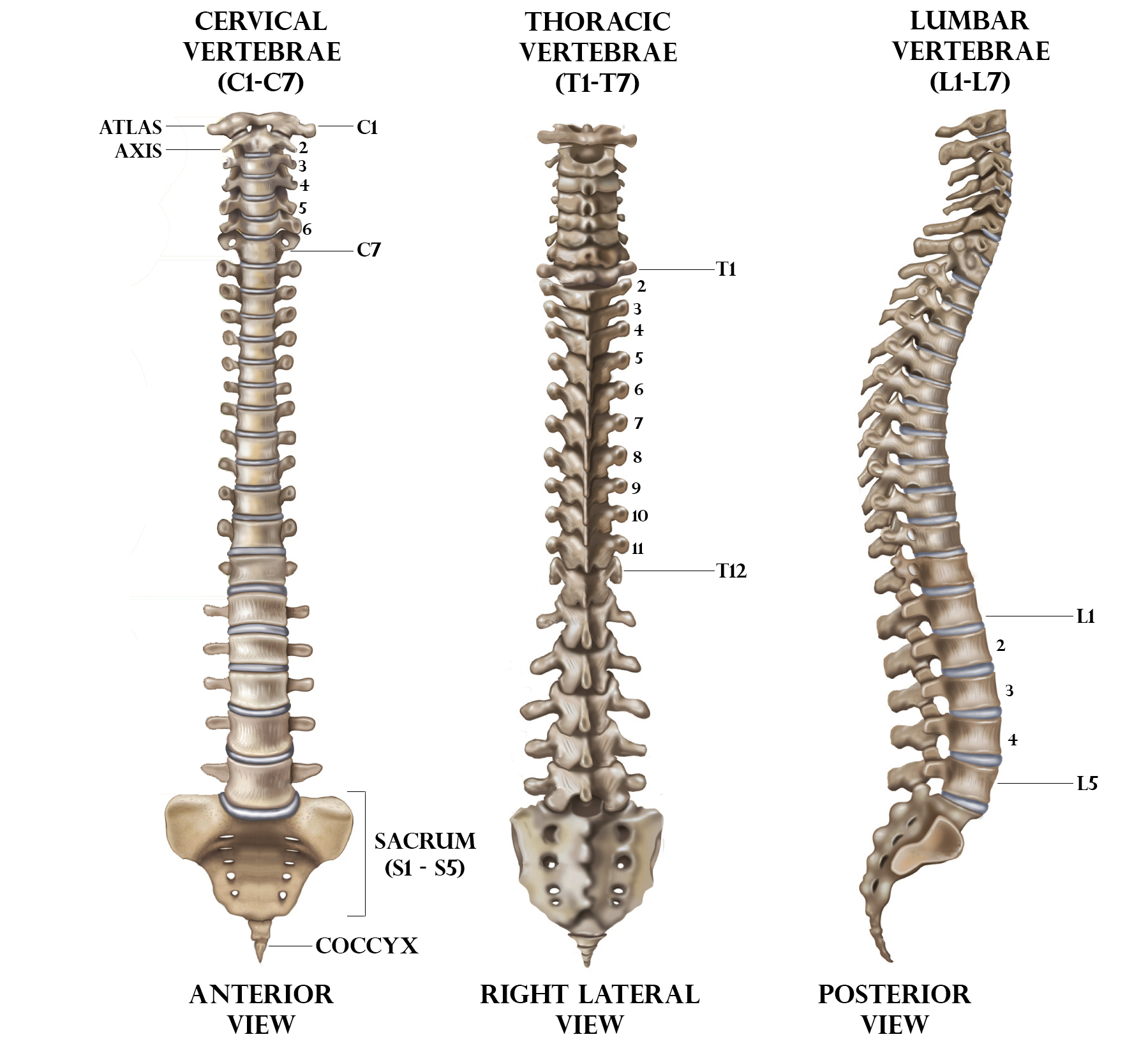
The number of intervertebral discs in the human spine is
(a) 25
(b) 23
(c) 35
(d) 40
Answer
571.5k+ views
Hint: The human spinal column consists of thirty-three vertebrae interconnected by fibrocartilaginous intervertebral discs. There is no intervertebral disc between the first cervical bone and the second cervical bone.
Complete answer:
The intervertebral discs are fibrocartilaginous lying between adjacent surfaces of the vertebrae. They form a fibrocartilaginous joint between the vertebral bodies, linking them together. Collectively, the discs make up one-third to one-quarter of the total spinal column’s length, forming an interpose between adjacent vertebrae from the axis (C2) to the sacrum. These intervertebral discs allow slight movement of the vertebral column, which includes axial compression/distraction, flexion/extension, axial rotation, lateral flexion. Intervertebral discs also act as a ligament to hold the vertebrae together and prevent friction between two moving vertebrae by preventing vertebral bodies from grinding against each other. Intervertebral discs, like other cartilages, have no blood supply. Intervertebral discs are innervated through various nerve fibers. There are 23 intervertebral discs in the spine: Six in the cervical region (neck) , twelve in the thoracic region (middle back) , and five in the lumbar region (lower back) . The intervertebral discs are approximately seven to ten mm thick and 4 centimeters in diameter (Anterior-Posterior Plane) in the lumbar region of the spine.

So the correct answer is ‘(b) 23’.
Note: Disc thickness generally increases from cervical to thoracic to lumbar. The thickness of the discs relative to the size of vertebral bodies is highest in the cervical and lumbar region. This reflects the increased range of motion found in those regions.
Complete answer:
The intervertebral discs are fibrocartilaginous lying between adjacent surfaces of the vertebrae. They form a fibrocartilaginous joint between the vertebral bodies, linking them together. Collectively, the discs make up one-third to one-quarter of the total spinal column’s length, forming an interpose between adjacent vertebrae from the axis (C2) to the sacrum. These intervertebral discs allow slight movement of the vertebral column, which includes axial compression/distraction, flexion/extension, axial rotation, lateral flexion. Intervertebral discs also act as a ligament to hold the vertebrae together and prevent friction between two moving vertebrae by preventing vertebral bodies from grinding against each other. Intervertebral discs, like other cartilages, have no blood supply. Intervertebral discs are innervated through various nerve fibers. There are 23 intervertebral discs in the spine: Six in the cervical region (neck) , twelve in the thoracic region (middle back) , and five in the lumbar region (lower back) . The intervertebral discs are approximately seven to ten mm thick and 4 centimeters in diameter (Anterior-Posterior Plane) in the lumbar region of the spine.

So the correct answer is ‘(b) 23’.
Note: Disc thickness generally increases from cervical to thoracic to lumbar. The thickness of the discs relative to the size of vertebral bodies is highest in the cervical and lumbar region. This reflects the increased range of motion found in those regions.
Recently Updated Pages
Master Class 12 Business Studies: Engaging Questions & Answers for Success

Master Class 12 Economics: Engaging Questions & Answers for Success

Master Class 12 English: Engaging Questions & Answers for Success

Master Class 12 Maths: Engaging Questions & Answers for Success

Master Class 12 Social Science: Engaging Questions & Answers for Success

Master Class 12 Chemistry: Engaging Questions & Answers for Success

Trending doubts
What is meant by exothermic and endothermic reactions class 11 chemistry CBSE

Which animal has three hearts class 11 biology CBSE

10 examples of friction in our daily life

One Metric ton is equal to kg A 10000 B 1000 C 100 class 11 physics CBSE

1 Quintal is equal to a 110 kg b 10 kg c 100kg d 1000 class 11 physics CBSE

Difference Between Prokaryotic Cells and Eukaryotic Cells




